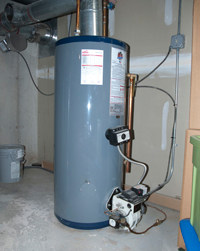Specialist Guidance for Caring for Your Home's Hot Water SystemWhat to Maintain Your Home's Hot Water System Effectively
Check Us OutHow do you feel on the subject of How to Maintain Your Water Heater & Prolong its Life?

Hot water is important for day-to-day convenience, whether it's for a rejuvenating shower or washing dishes. To ensure your warm water system runs successfully and lasts much longer, routine maintenance is key. This write-up provides practical tips and insights on how to maintain your home's hot water system to prevent interruptions and expensive repair work.
Introduction
Preserving your home's hot water system may seem difficult, however with a few straightforward actions, you can guarantee it runs efficiently for several years ahead. This overview covers whatever from comprehending your hot water system to DIY maintenance tips and knowing when to call in professional aid.
Relevance of Keeping Your Warm Water System
Routine maintenance not only extends the lifespan of your hot water system but also ensures it operates efficiently. Ignoring maintenance can lead to decreased efficiency, higher energy expenses, and also premature failure of the system.
Indications Your Hot Water System Requirements Maintenance
Knowing when your hot water system requires focus can protect against significant concerns. Keep an eye out for indications such as inconsistent water temperature, unusual noises from the heater, or rusty water.
Purging the Hot Water Heater
Purging your hot water heater eliminates sediment buildup, improving efficiency and lengthening its life.
Monitoring and Changing Anode Rods
Anode poles avoid corrosion inside the tank. Inspecting and changing them when broken is vital.
Complicated Issues Requiring Specialist Aid
Examples include major leakages, electric problems, or if your water heater is continually underperforming.
Regular Expert Upkeep Perks
Professional maintenance can consist of extensive evaluations, tune-ups, and ensuring conformity with safety criteria.
Checking and Changing Temperature Setups
Changing the temperature setups guarantees optimal efficiency and security.
DIY Tips for Upkeep
You can carry out several upkeep tasks on your own to keep your hot water system in leading condition.
Looking for Leaks
Frequently inspect pipelines and connections for leakages, as these can result in water damage and greater bills.
Comprehending Your Warm Water System
Prior to diving right into maintenance tasks, it's valuable to recognize the standard components of your hot water system. Usually, this includes the hot water heater itself, pipelines, anode poles, and temperature level controls.
Monthly Maintenance Tasks
Routine regular monthly checks can assist capture small concerns before they escalate.
Evaluating Pressure Relief Valves
Testing the pressure relief valve ensures it works appropriately and avoids too much pressure accumulation.
Shielding Pipes
Shielding hot water pipes lowers heat loss and can conserve power.
When to Call an Expert
While do it yourself maintenance is useful, some concerns require expert expertise.
Conclusion
Routine upkeep of your home's hot water system is vital for effectiveness, long life, and cost savings. By adhering to these tips and understanding when to look for specialist help, you can guarantee a trusted supply of warm water without unexpected interruptions.
How to Maintain an Instant Hot Water Heater
Before tinkering with your hot water heater, make sure that it’s not powered on. You also have to turn off the main circuit breaker and shut off the main gas line to prevent accidents. Also turn off the water valves connected to your unit to prevent water from flowing into and out of the appliance. 2. When you’re done, you have to detach the purge valves’ caps. These look like the letter “T” and are situated on either side of the water valves. Doing so will release any pressure that has accumulated inside the valves while at the same time avoid hot water from shooting out and burning your skin. 3. When the purge valves’ caps are removed, you have to connect your hosing lines to the valves. Your unit should have come with three hoses but if it didn’t, you can purchase these things from any hardware or home repair shops. You can also get them from retail stores that sell water heating systems. Read the user’s manual and follow it to complete this task properly. When the hosing lines are connected, open the purge port’s valves. 4. You should never use harsh chemical cleaners or solutions when cleaning your unit. Make use of white vinegar instead. It should be undiluted and you’ll probably use about 2 gallons. 5. Now flush your water heater. This task should probably take about 40 minutes. We can’t give you specific directions for this because the procedure is carried out depending on the type, model and brand of your heater. With that being said, refer to the user’s manual. 6. When you’re done draining the unit, you have to turn off the purge port valves again. Remove the hosing lines that you earlier installed on each of the water valves. Put the valve caps (purge port) back in their respective places and be very careful so as not to damage the rubber discs that are found inside these caps. 7. Now that everything’s back in place, check your user’s manual again to find out how to reactivate your water heating system. 8. Once it is working, turn one of your hot water faucets on just to let air pass through the heater’s water supply pipes. Leave the tap on until water flows smoothly out of it. https://www.orrplumbing.com/blog/2014/september/how-to-maintain-an-instant-hot-water-heater/

I recently found that blog post about Tips For Maintaining Your Hot Water Heater when scouting around the internet. Liked our entry? Please quickly share it. Let someone else check it out. I enjoy your readership.
Visit Homepage